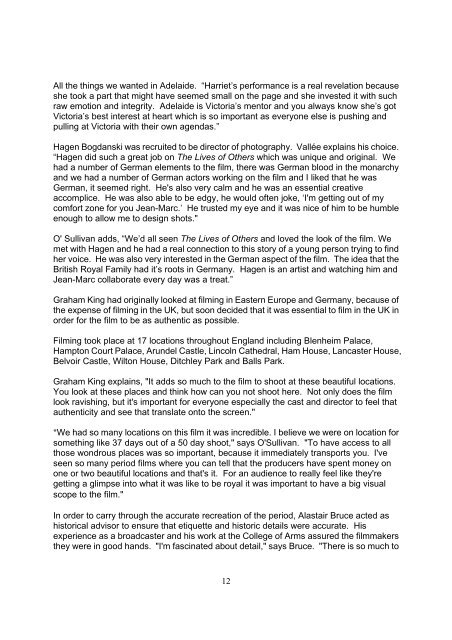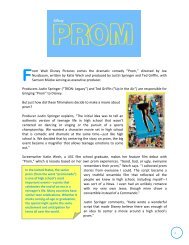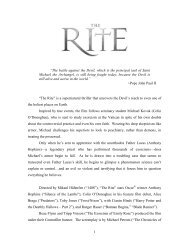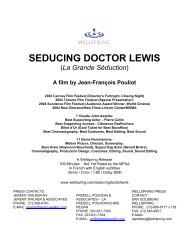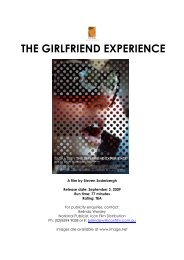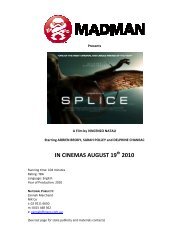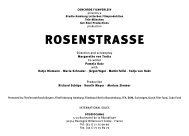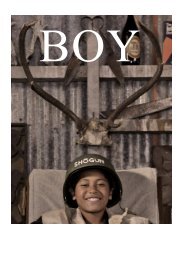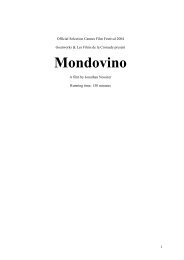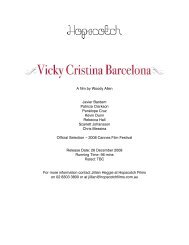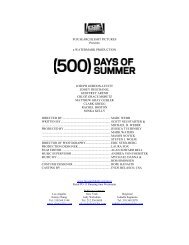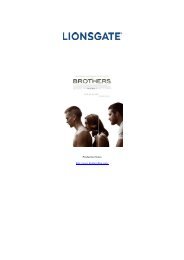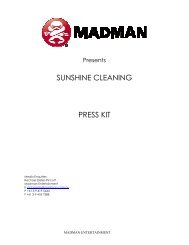THE YOUNG VICTORIA PRODUCTION NOTES - Thecia
THE YOUNG VICTORIA PRODUCTION NOTES - Thecia
THE YOUNG VICTORIA PRODUCTION NOTES - Thecia
Create successful ePaper yourself
Turn your PDF publications into a flip-book with our unique Google optimized e-Paper software.
All the things we wanted in Adelaide. “Harriet’s performance is a real revelation because<br />
she took a part that might have seemed small on the page and she invested it with such<br />
raw emotion and integrity. Adelaide is Victoria’s mentor and you always know she’s got<br />
Victoria’s best interest at heart which is so important as everyone else is pushing and<br />
pulling at Victoria with their own agendas.”<br />
Hagen Bogdanski was recruited to be director of photography. Vallée explains his choice.<br />
“Hagen did such a great job on The Lives of Others which was unique and original. We<br />
had a number of German elements to the film, there was German blood in the monarchy<br />
and we had a number of German actors working on the film and I liked that he was<br />
German, it seemed right. He's also very calm and he was an essential creative<br />
accomplice. He was also able to be edgy, he would often joke, ‘I'm getting out of my<br />
comfort zone for you Jean-Marc.’ He trusted my eye and it was nice of him to be humble<br />
enough to allow me to design shots."<br />
O' Sullivan adds, “We’d all seen The Lives of Others and loved the look of the film. We<br />
met with Hagen and he had a real connection to this story of a young person trying to find<br />
her voice. He was also very interested in the German aspect of the film. The idea that the<br />
British Royal Family had it’s roots in Germany. Hagen is an artist and watching him and<br />
Jean-Marc collaborate every day was a treat.”<br />
Graham King had originally looked at filming in Eastern Europe and Germany, because of<br />
the expense of filming in the UK, but soon decided that it was essential to film in the UK in<br />
order for the film to be as authentic as possible.<br />
Filming took place at 17 locations throughout England including Blenheim Palace,<br />
Hampton Court Palace, Arundel Castle, Lincoln Cathedral, Ham House, Lancaster House,<br />
Belvoir Castle, Wilton House, Ditchley Park and Balls Park.<br />
Graham King explains, "It adds so much to the film to shoot at these beautiful locations.<br />
You look at these places and think how can you not shoot here. Not only does the film<br />
look ravishing, but it's important for everyone especially the cast and director to feel that<br />
authenticity and see that translate onto the screen."<br />
"We had so many locations on this film it was incredible. I believe we were on location for<br />
something like 37 days out of a 50 day shoot," says O'Sullivan. "To have access to all<br />
those wondrous places was so important, because it immediately transports you. I've<br />
seen so many period films where you can tell that the producers have spent money on<br />
one or two beautiful locations and that's it. For an audience to really feel like they're<br />
getting a glimpse into what it was like to be royal it was important to have a big visual<br />
scope to the film." <br />
In order to carry through the accurate recreation of the period, Alastair Bruce acted as<br />
historical advisor to ensure that etiquette and historic details were accurate. His<br />
experience as a broadcaster and his work at the College of Arms assured the filmmakers<br />
they were in good hands. "I'm fascinated about detail," says Bruce. "There is so much to<br />
12


